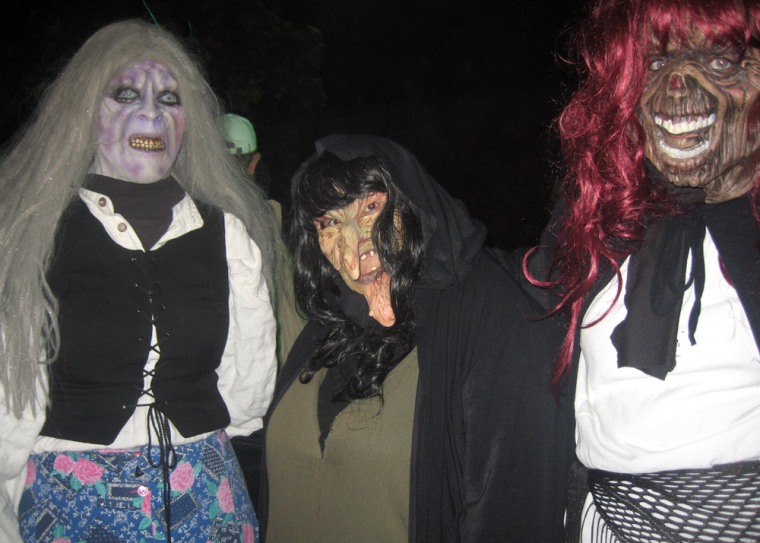Boris Karloff never walked these grounds, but the history of Burg Frankenstein may have inspired Mary Shelley's famous monster.
It has also inspired one of the oldest Halloween parties in Germany, started by the U.S. Army 31 years ago.
Since then an estimated 15,000 people flock to the former keep near Darmstadt in western Germany annually for chills, frights and the chance to walk through the halls of the place that many believe inspired the creation of "The Modern Prometheus," as Shelley subtitled her famous novel.
This year, the weekend parties started Oct. 24 and extend through Nov. 9.
Once a massive fortress, all that remains now of the castle is a pair of towers and a chapel. But that is plenty of space for Halloween-inspired mischief and merry mayhem with a torture chamber, fireworks, flaming swords and, of course, a rather tall, gray-tinged hulking collection of body parts with a major fear of fire.
What's left of the 1,000-year-old castle — it was first mentioned in local records in 948 — offers the perfect atmosphere for thrill-seeking.
A shuttle bus winds up through the dark woods and at the top there are only festival lights and the stars overhead.
Some 80 monsters lurk inside the castle walls ready to give the guests what they came for. Witches banter back and forth, casting spells outside their hut.
A deadly pale lumberjack sneaks up behind the unsuspecting and his chain saw roars to life. In the darkness, a werewolf growls, trying to chew on a living ear, and vampires crane to bite exposed necks of passer-by.
Walter Scheele, a writer and chronicler of the castle, has traced the history of both the castle and the festival.
Halloween came in earnest with the U.S. Army, he said.
"After World War II the U.S. Army stayed in Darmstadt and they brought Halloween with them," he told The Associated Press. "They had their party at the barracks until it was too noisy and they asked if they could have it at the castle instead."
Mathias Buehrer, who owned the "Frankenstein Inn" inside the castle at the time, agreed to host the festivities.
It's been there ever since.
"The U.S. Army broadcast the message over the radio, on the American Forces Network," he said. "'Come to Burg Frankenstein, home of the monster,' they said, before every program. And then people from all over Europe came to the castle."
On a Saturday night just less than two weeks before Halloween, hundreds of guests got into the act. Some sported fakes knives through the head while others dressed up as creatures of the night, replete with fake fangs and blood dripping from their mouths.
While the U.S. Army is in the process of leaving Darmstadt, soldiers and their families remain drawn to the castle.
Busloads of men and women and their families come here annually to celebrate in costume, just like haunted houses back home. A Halloween party in a castle named Frankenstein is too perfect to miss.
The castle itself is also believed to have influenced Shelley, though there is some debate how much. The generally accepted notion is that she passed by the castle at night, but Scheele said his research is more thorough.
"Mary Shelley got the name Victor von Frankenstein from the physician and alchemist Johann Conrad Dippel von Frankenstein," said Scheele, who has written two books about the castle and its legends.
"Dippel took bodies from the graveyard in Nieder-Beer-bach and the minister told everyone in the local parish said that he used the body parts to create a monster," he explained.
Jacob Grimm, half of the fabled Brothers Grimm, related the folklore to Shelley's stepmother, Mary Jean Clairmont, who may have told her.
"Mary Shelley got the idea from her," Scheele said.
